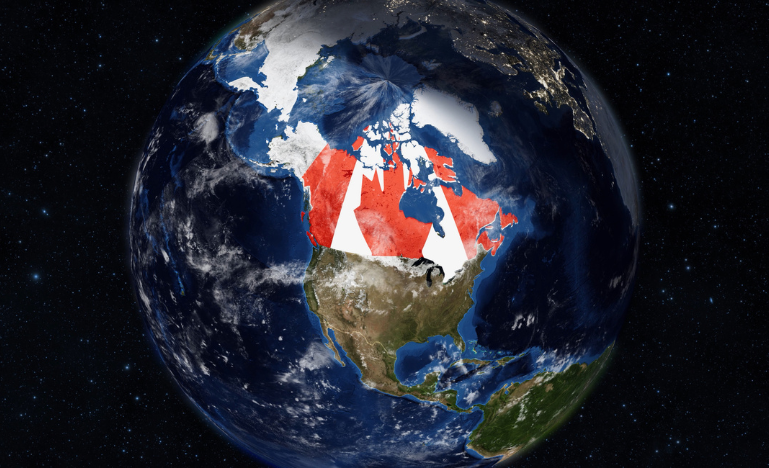Une mosaïque désuète
Un nouveau mémoire de l’ABC en appelle à une refonte du système d’immigration canadien

Une mosaïque désuète
Un nouveau mémoire de l’ABC en appelle à une refonte du système d’immigration canadien
La Loi sur l’immigration et la protection des réfugiés commence à dater; une modernisation s’impose.
C’est le message qui domine dans un nouveau mémoire de la Section du droit de l’immigration de l’Association du Barreau canadien (ABC).
L’ABC a présenté ce mémoire à la ministre de l’Immigration, Lena Metlege Diab, au ministre de la Sécurité publique, Gary Anandasangaree, et au ministre de la Transformation du gouvernement, des Travaux publics et de l’Approvisionnement, Joël Lightbound.
Intitulé Droit, technologie et responsabilisation : repenser l’immigration canadienne pour le 21e siècle, le mémoire contient 100 recommandations pour moderniser le cadre d’immigration canadien, en vigueur depuis 2001.
Deanna L. Okun-Nachoff, de McCrea Immigration Law, à Vancouver, fait partie du groupe de travail qui l’a rédigé. Pour elle, vu les nombreux conflits mondiaux à l’origine de mouvements de population et la situation économique difficile post-COVID-19, le mémoire attire l’attention sur un nouveau portrait beaucoup plus complexe de l’immigration.
« Nous observons un changement d’attitude de la population face à l’immigration au Canada. Pour beaucoup d’entre nous, c’est du jamais vu, et nous croyons que c’est le résultat du grand état de déconfiture du système d’immigration. »
Elle ajoute qu’au lieu de constituer une base réglementaire et législative aux politiques sur l’immigration, le cadre est devenu « un ensemble disparate de politiques ad hoc créées sous instructions ministérielles ».
En 2008, le ministre de l’Immigration s’est arrogé le pouvoir d’émettre des instructions. Le gouvernement fédéral voulait ainsi se doter d’un mécanisme agile pour pouvoir faire volte-face et changer les règles rapidement, au besoin.
À l’époque, l’Association du Barreau canadien avait tiré la sonnette d’alarme, puisque cela allait à l’encontre de la primauté du droit et des principes démocratiques.
« Les processus réglementaires sont là pour une raison : lorsqu’on adopte de nouvelles lois, il y a débat, il y a considération et il y a un temps de réflexion », indique Me Okun-Nachoff.
À outrepasser tout cela, on met en péril la sécurité et la prévisibilité. Ainsi, comme il fallait s’y attendre, l’une et l’autre se sont érodées avec le temps, ce qui a « complètement transformé l’approche du droit de l’immigration ».
Un manque de prévisibilité problématique
Me Okun-Nachoff dénonce un manque de transparence, de cohérence, de dialogue et de débat entourant les politiques, qui sont adoptées trop vite et ont des effets bien réels sur de nombreuses vies.
« À la section du droit de l’immigration, nous blaguons que le temps de prendre une pause-café, une nouvelle règle est en place. »
Du côté du droit administratif, où l’équité procédurale et les droits de la personne comptent pour beaucoup, les praticiens et leurs clients ont du mal à naviguer dans un système sans prévisibilité.
Me Okun-Nachoff se désole de voir que des gens qui décident de venir s’installer ici avec leur famille après mûre réflexion voient leurs efforts contrecarrés des années plus tard lorsque les règles du jeu changent. Leur projet n’est vraiment pas viable, et ils n’y sont pour rien; alors ils n’ont pas le choix de faire marche arrière.
« Les gens sont désabusés et extrêmement confus. »
Ce manque d’équité et de cohésion a affaibli l’image du Canada dans le monde et nui à notre capacité d’attirer exactement ceux et celles que nous cherchons à attirer.
« Quand je parle à certains clients, je me demande vraiment pourquoi le Canada ne souhaite pas les attirer ici et les garder, mais je suis incapable de leur trouver une voie vers la résidence permanente », se désole-t-elle encore, à propos d’une personne qui est venue ici, a obtenu son doctorat et a œuvré dans le secteur du changement climatique, sans réussir à marquer assez de points pour se qualifier.
Elle trouve d’ailleurs assez étrange, comme praticienne, d’avoir à dire à un client que s’il apprend le français, il aura peut-être une meilleure chance.
« Je n’ai absolument aucun problème avec le mandat d’essayer de bâtir des communautés francophones, mais je trouve que la manière dont on s’y prend est très étrange. C’est tellement mécanique. »
« Je trouve simplement que, dans cet effort de tout automatiser, de faciliter le processus dans un environnement d’apprentissage machine, on perd beaucoup, en déterminant selon une logique quantitative qui l’on souhaite avoir ici. »
Les juristes se heurtent à cette réalité chaque semaine.
Un besoin de transparence concernant la technologie
La technologie n’aide pas non plus à l’opacité grandissante du système, surtout lorsqu’on pense à la façon dont l’intelligence artificielle a fait son entrée et a été gérée.
En 2021, Immigration, Réfugiés et Citoyenneté Canada a admis avoir recours à Chinook pour traiter des demandes de résidence temporaire, chose qui n’a jamais été annoncée publiquement, selon Me Okun-Nachoff. En effet, c’est en voyant des mentions au dossier des demandeurs – concernant l’intervention de Chinook dans la prise de décision – que les juristes l’ont appris. Cet acte caché a vraiment ébranlé la confiance. Elle ajoute qu’il n’est pas rare d’entendre des juristes s’interroger à savoir si le dossier bien touffu qu’ils soumettent au nom d’un client sera réellement lu par quelqu’un.
« Les gens ont beaucoup de doutes. »
Tout le processus est imprégné de ce sentiment. Lorsque l’outil technologique fait le tri et refuse la demande, on sait qu’il y a un humain quelque part dans le processus, mais combien de temps cet humain passe-t-il à lire le dossier? Ce n’est pas toujours clair. Lorsqu’un demandeur reçoit une décision, il n’a aucune information sur le pourquoi du refus.
« Le libellé concerne seulement le refus, se résumant parfois à une ou deux phrases. C’est bien peu de matière pour une contestation, et la qualité de l’examen judiciaire s’en trouve affectée », illustre Me Okun-Nachoff.
« À mes yeux, le dossier du tribunal est incomplet. »
Même lorsqu’une demande est acceptée, la personne n’a aucune idée si c’est en raison de l’algorithme ou de facteurs qui sont inconnus du public. Me Okun-Nachoff n’a pas de problème à ce qu’on ait recours à l’automatisation pour des raisons d’efficacité, mais elle trouve inquiétant qu’il n’y ait aucun cadre général pour régir la façon dont l’IA est bâtie ni aucun mécanisme de surveillance accessible au public.
Qu’il s’agisse de comprendre les paramètres ou de savoir si le processus est bel et bien exempt de discrimination, il n’existe aucune garantie à l’heure actuelle.
Des obligations en droit international
Le mémoire soulève une autre question : dans l’état des choses, le Canada respecte-t-il vraiment ses obligations en matière de droit international, de régime de protection des réfugiés et de réponse aux crises humanitaires, de l’Ukraine à Gaza en passant par le Soudan? Ses programmes satisfont-ils aux obligations nationales liées aux valeurs de la Charte?
Nous y postulons que dans le contexte des réfugiés, la prise de décision doit reposer sur des principes, être humaine et tenir compte des traumatismes. Elle doit être équitable pour tous les demandeurs d’asile qui fuient la violence et la persécution.
Un autre point manque cruellement de cohérence, indique Me Okun-Nachoff : ces dernières années ont amené une pléthore de programmes pour les gens qui viennent se réfugier au Canada, mais chacun est une création distinctement unique.
« Je ne veux pas avoir l’air trop cynique, mais même si le gouvernement a bonne presse grâce à ces programmes, la réalité du terrain, auprès des demandeurs, est parsemée de défis et d’embûches. »
Le mémoire ambitieux propose des réformes guidées par six principes fondamentaux : les droits de la personne, l’innovation, la transparence, la justice naturelle, la collaboration et l’expérience utilisateur.
L’objectif est de ramener l’équilibre, la cohérence et la cohésion pour que le système, qui a des ramifications profondes dans la vie et les droits des gens, soit convivial, équitable et accessible.
« Nous voulons que ce soit le début d’un dialogue avec le ministère », indique Me Okun-Nachoff.
« L’ABC cherche à être un partenaire digne de ce nom pour (contribuer à) élaborer une politique d’immigration durable qui repose sur des principes. Nous espérons que c’est le message qui sera retenu; et que la collaboration donnera fruit à quelque chose qui ressemble moins à une mosaïque disparate et plus à un vrai régime fonctionnel. »


